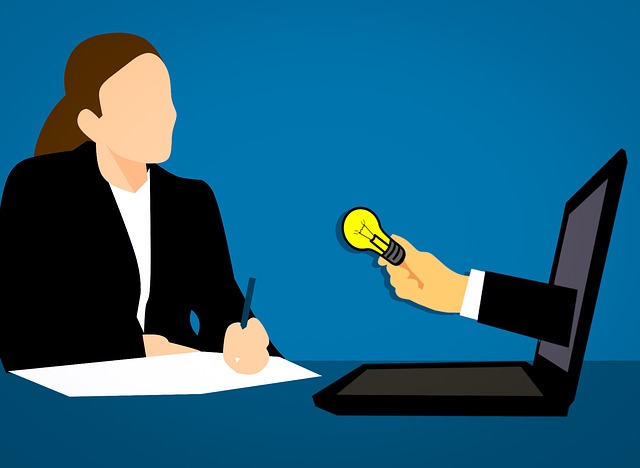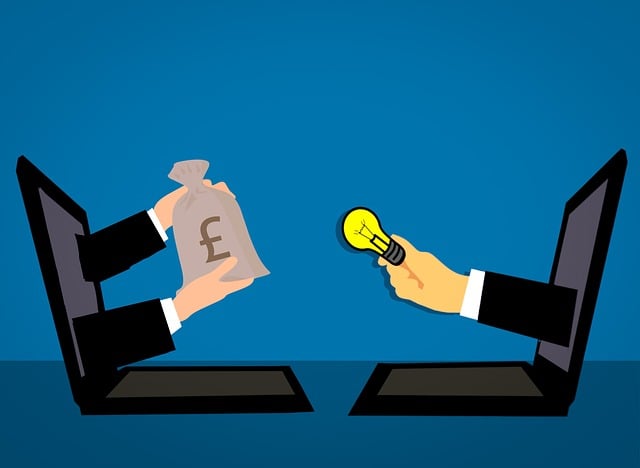Are you tired of sending generic emails that go straight to the trash? Looking for a way to boost your email marketing conversions? Well, look no further! Email personalization is the key to capturing your audience’s attention and driving them to take action.
Have you ever received an email that addressed you by name and offered a product or service tailored to your interests? It’s a powerful feeling, isn’t it? That’s because personalization makes your customers feel valued and understood. And when they feel valued, they are more likely to engage with your content and convert into loyal customers.
In this article, we will explore the importance of email personalization and how it can significantly improve your conversion rates. We’ll dive into the strategies and techniques for collecting and utilizing customer data, segmenting your audience, crafting personalized content, and automating your campaigns.
Plus, we’ll discuss how to analyze and optimize your email marketing performance for even better results.
Get ready to transform your email marketing game and see those conversions soar!
Key Takeaways
- Email personalization is crucial for boosting email marketing conversions.
- Collecting and utilizing customer data allows businesses to create targeted and relevant email campaigns.
- Segmentation techniques like demographic and behavioral segmentation improve targeting and conversions.
- Analyzing and optimizing campaign performance enhances conversions.
Understanding the Importance of Email Personalization
Email personalization is crucial for increasing conversions, as it allows businesses to tailor their offers to each individual customer, making them feel valued and ultimately more likely to make a purchase. The importance of personalization in email marketing cannot be overstated.
When customers receive personalized emails, they’re more likely to open them and engage with the content. This leads to higher click-through rates and ultimately, increased conversions. Personalized email campaigns have numerous benefits, including increased customer loyalty, higher customer lifetime value, and improved customer satisfaction.
By collecting and utilizing customer data, businesses can better understand their customers’ preferences and behaviors, allowing them to create targeted and relevant email campaigns. This not only improves the customer experience but also increases the chances of converting leads into paying customers.
Collecting and Utilizing Customer Data
When collecting and utilizing customer data, you can significantly enhance the effectiveness of your marketing efforts.
By implementing customer profiling, you gain valuable insights into your target audience’s preferences, behaviors, and needs. This allows you to tailor your offers and content to their specific interests, increasing the chances of conversion.
Data-driven marketing empowers you to make informed decisions based on real-time data, ensuring that your messages resonate with your customers. Additionally, it enables you to identify patterns and trends, helping you stay ahead of the competition.
With customer data at your disposal, you can create personalized and relevant emails that speak directly to your audience, fostering a stronger connection and driving higher engagement.
As you move into the next section about segmentation: divide and conquer, you’ll see how data plays a crucial role in effectively segmenting your email lists.
Segmentation: Divide and Conquer
In order to effectively target your customers and improve conversions, it’s important to utilize segmentation techniques. These techniques include demographic segmentation and behavioral segmentation.
Demographic segmentation involves dividing your customer base into groups based on characteristics such as age, gender, income, and location. This allows you to tailor your marketing messages and offers to specific groups, increasing the likelihood of conversion.
On the other hand, behavioral segmentation involves analyzing customer behavior. This includes factors such as purchase history, browsing patterns, and engagement with your brand. By understanding their preferences, you can target them with personalized offers.
By utilizing both demographic and behavioral segmentation, you can maximize the effectiveness of your marketing efforts and drive higher conversions.
Demographic Segmentation
Imagine a world where marketing strategies are as diverse as the population they target, where the art of demographic segmentation is embraced for maximum conversion rates. In this world of targeted marketing, customer profiling plays a crucial role in customizing offers that resonate with different demographic groups.
To create a vivid image in your mind, think of the following scenarios:
-
A young, urban couple receiving tailored offers for trendy clothing and accessories.
-
A retired individual receiving promotions for travel packages and leisure activities.
-
A tech-savvy millennial receiving personalized recommendations for the latest gadgets and apps.
-
A busy working parent receiving time-saving solutions and family-friendly offers.
By understanding the unique needs, preferences, and characteristics of each demographic segment, marketers can deliver highly relevant content that drives conversions.
Now, let’s delve into the next step, behavioral segmentation, to further refine our marketing strategies.
Behavioral Segmentation
To truly connect with your target audience, understand their unique behaviors and tailor your marketing strategies accordingly.
Behavioral segmentation allows you to divide your audience based on their actions, preferences, and interests. By analyzing their online behavior, purchase history, and engagement with your brand, you can create targeted messaging that resonates with each individual customer.
This approach not only increases customer engagement but also improves the chances of conversions. When you send personalized emails based on behavioral segmentation, you’re showing your customers that you understand their needs and preferences. This can build trust and loyalty, ultimately leading to higher conversion rates.
Crafting personalized and relevant content is the next step to ensure your customers feel valued and connected.
Crafting Personalized and Relevant Content
Craft content that is personalized and relevant to your audience’s needs and preferences, and watch as your conversion rates skyrocket.
For example, by tailoring your email offers to match the specific interests of your customers, you can increase click-through rates by up to 30%.
Creating targeted email campaigns is crucial in today’s digital landscape, where consumers are bombarded with numerous marketing messages daily. By leveraging customer preferences, you can send emails that resonate with your audience, making them more likely to engage and convert.
Start by segmenting your audience based on their demographic information, past purchases, or browsing behavior. Then, craft content that speaks directly to their pain points, desires, and interests. Use personalized subject lines, dynamic content, and product recommendations to make your emails stand out.
With personalized and relevant content, you can connect with your audience on a deeper level, driving higher conversions and customer loyalty.
When it comes to automation, it’s essential to streamline your email marketing efforts to save time and increase efficiency. Transitioning into the subsequent section about automation, you can implement tools and software that automate tasks such as email scheduling, list segmentation, and personalization.
Automation: Saving Time and Increasing Efficiency
Now that you understand the importance of crafting personalized and relevant content, let’s discuss how automation can help you save time and increase efficiency in your email personalization efforts. By automating certain tasks, you can streamline processes and free up valuable resources to focus on other aspects of your marketing strategy.
With automation, you can set up triggers and workflows that automatically send personalized emails based on specific actions or behaviors. This not only saves you time and effort but also ensures that your audience receives timely and relevant offers.
To illustrate the benefits of automation, let’s take a look at the following table:
| Task | Manual Process | Automated Process |
|---|---|---|
| Subscriber Segmentation | Time-consuming | Instant and accurate |
| Personalized Content Creation | Manual and repetitive | Automated and efficient |
| Email Scheduling | Manual and prone to errors | Automated and error-free |
| Follow-up Emails | Easily overlooked | Timely and consistent |
| Performance Tracking | Manual and time-consuming | Real-time and comprehensive |
By leveraging automation, you can save resources and streamline your email personalization processes. Now, let’s dive into the next section and explore how analyzing and optimizing campaign performance can further enhance your conversions.
Analyzing and Optimizing Campaign Performance
Enhance your marketing strategy by diving into the analysis and optimization of your campaign performance. This will allow you to uncover valuable insights and maximize your results.
Improving click-through rates is crucial for the success of your email marketing campaigns. By analyzing the performance of your campaigns, you can identify areas that need improvement and make data-driven decisions to enhance your results.
A/B testing is a powerful tool that allows you to compare different versions of your emails and determine which one performs better. By testing different subject lines, content, or CTAs, you can optimize your email campaigns for better performance and higher conversions.
Analyzing and optimizing your campaign performance is essential in achieving your marketing goals and improving your overall email personalization strategy.
Frequently Asked Questions
How can email personalization improve customer engagement?
Improve customer engagement with personalized emails. By tailoring offers to individual customers using personalization techniques in email marketing, you can create a powerful connection.
Imagine your customer’s excitement when they receive an email specifically designed for them, addressing their unique needs and preferences. This level of personalization increases the chances of them engaging with your email, leading to improved conversions.
Don’t miss out on the benefits of customized offers in emails – start personalizing today!
What are some effective strategies for collecting customer data for email personalization?
To collect customer data for email personalization, you can use incentives and surveys. Incentives like discounts or freebies can encourage customers to provide their information willingly.
Surveys are another effective strategy as they allow you to directly ask customers about their preferences, interests, and needs. By using these methods, you can gather valuable data that will help you tailor your email offers and increase your chances of converting customers.
How can segmentation help increase the effectiveness of email campaigns?
Segmentation is a powerful tool that can significantly increase the effectiveness of your email campaigns. By dividing your audience into specific segments based on demographics, interests, or behavior, you can create targeted and personalized messages that resonate with each group.
This allows you to deliver more relevant content, increasing engagement and conversions. With segmentation, you can tailor your offers to specific customer needs and preferences, improving the overall effectiveness of your email campaigns.
What are some key elements to consider when crafting personalized and relevant content for emails?
To craft personalized and relevant content for emails, you should consider two key elements: data collection and customer segmentation.
By collecting data on your customers’ preferences and behaviors, you can better understand their needs and interests. This allows you to segment your audience into smaller groups based on similarities.
With this information, you can tailor your email content to each segment, ensuring it resonates with their specific preferences. This personalized approach increases the chances of engagement and conversions.
What tools or software can be used to automate email personalization processes?
Automated email personalization is made easy with targeted email marketing tools. These powerful software solutions allow you to efficiently tailor your email campaigns, ensuring that each recipient receives personalized content based on their preferences and behavior.
By automating the personalization process, you can save time and effort while still delivering highly relevant and engaging emails. Take advantage of these tools to increase conversions and drive better results for your email marketing campaigns.
Conclusion
In conclusion, personalizing your email offers is essential for boosting conversions. By collecting and utilizing customer data, you can segment your audience and craft tailored content that resonates with each individual.
Automation streamlines the process, saving you time and increasing efficiency. And by analyzing campaign performance, you can continuously optimize your strategies for even better results.
Don’t miss out on the power of email personalization – it’s the key to driving engagement and increasing conversions. Start personalizing your email offers today and watch your business thrive.









